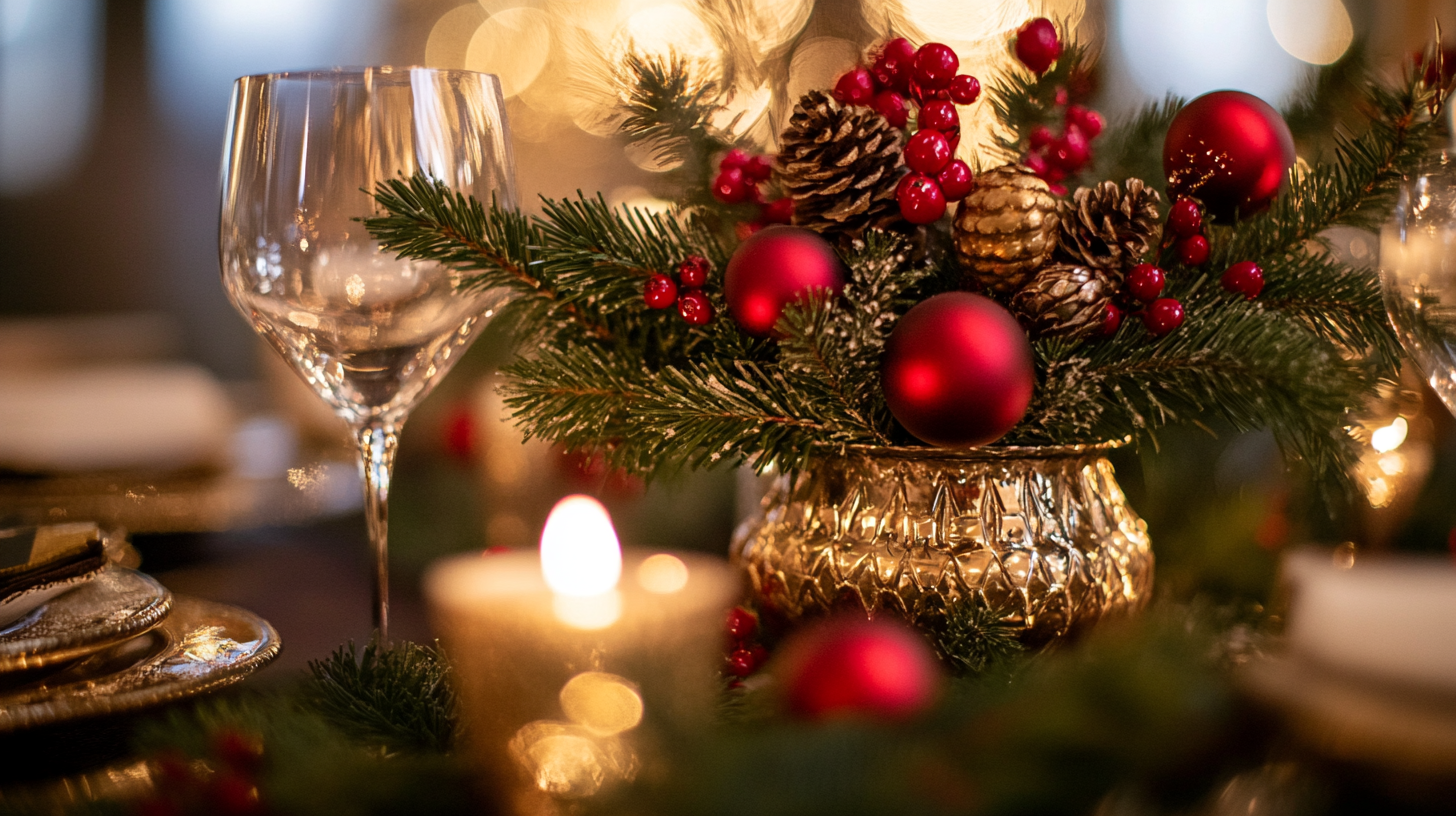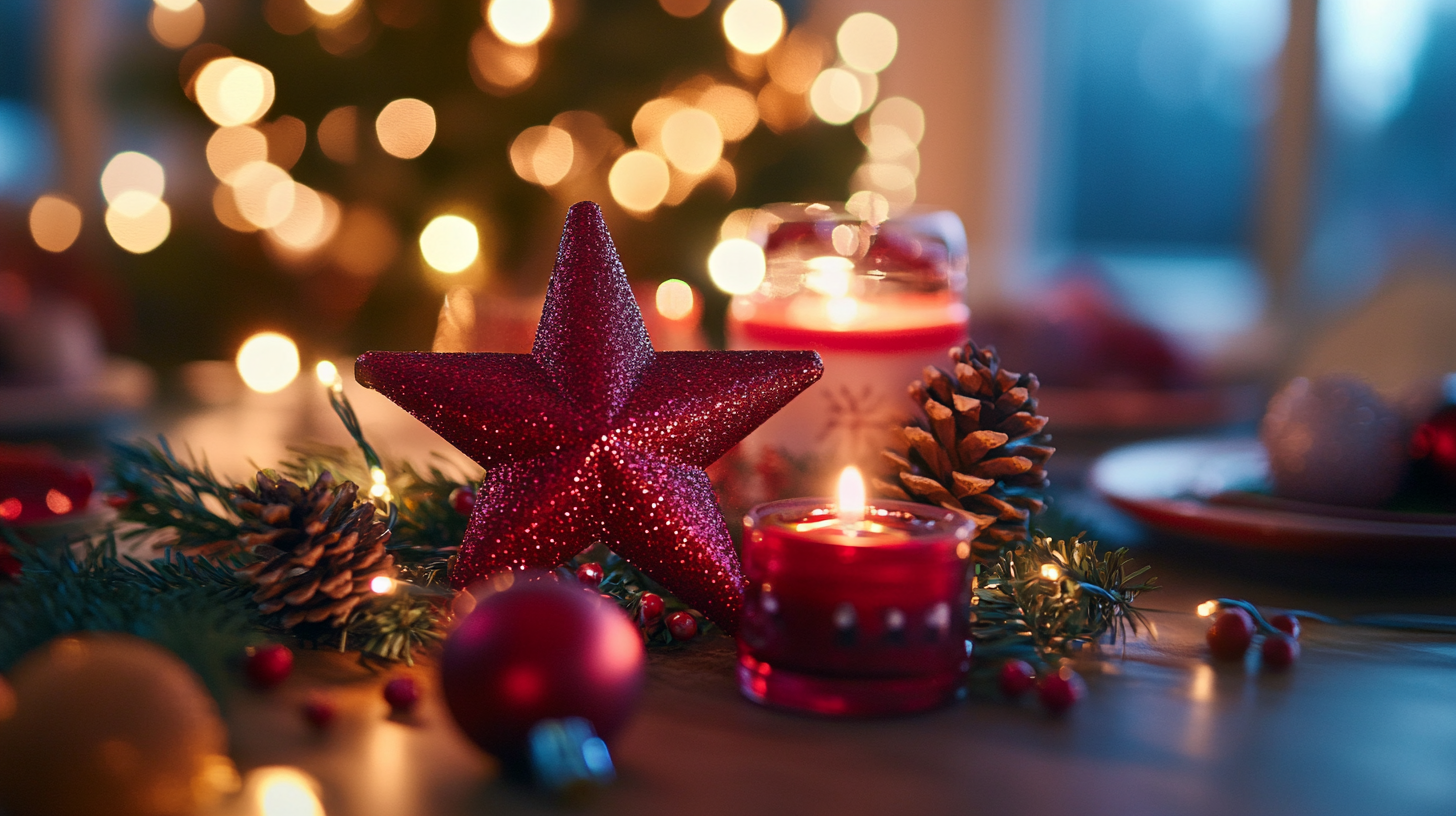As we approach the holiday season, the evolving landscape of technology continues to influence our celebrations, particularly in the realm of home decor. The 2025 tech trends present exciting opportunities for creating stunning Christmas centerpieces that reflect modern aesthetics while embracing innovative alternatives. According to a recent report by Market Research Future, the global home decor market is projected to reach USD 682 billion by 2024, driven by advancements in design technology and consumer preferences for personalized ornaments. With "中国智造,全球热销,品质保证" emphasizing quality construction and global appeal, this shift not only enhances the visual experience of festive gatherings but also incorporates sustainability and functionality into holiday design. Explore how these trends are redefining Christmas centerpieces, blending tradition with cutting-edge creativity for an unforgettable celebration.

As we look ahead to the holiday season of 2025, innovative materials are set to redefine Christmas centerpieces, creating stunning displays that not only enhance festive aesthetics but also embody sustainability. According to a report by Smithers Pira, the global market for biodegradable materials is projected to reach $420 billion by 2025, indicating a strong shift toward eco-friendly alternatives. This trend is becoming apparent in holiday decor, where traditional glass and plastic are gradually being replaced by materials such as bamboo, recycled paper, and biodegradable plastics. These choices not only reduce environmental impact but also offer unique textures and natural colors that can elevate Christmas table settings.
In addition to sustainability, technology is enhancing these materials in unexpected ways. 3D printing, for example, allows for the creation of intricate centerpiece designs that would be difficult or costly to produce using traditional manufacturing methods. A report from Grand View Research highlights that the 3D printing market is expected to grow exponentially, reaching $34.8 billion by 2026. This growth will likely lead to a greater emphasis on custom, themed centerpieces that are not only visually stunning but also tell a story tied to personal or cultural significance. As consumers increasingly seek to personalize their holiday experiences, innovative materials paired with cutting-edge technology will play a critical role in shaping the centerpieces of the future.

As the holiday season approaches, the integration of smart technology into our home decorations is becoming increasingly popular.
The Internet of Things (IoT) has revolutionized how we experience festive displays, enabling greater personalization and interactivity. For instance, smart ornaments equipped with sensors can respond to environmental changes, such as lighting or temperature, creating a dynamic centerpiece that adapts to its surroundings. Meanwhile, homeowners can control these decorations remotely through their smartphones, allowing for seamless updates and adjustments to match varying moods and themes.
Furthermore, IoT technology promotes sustainability in holiday decor. Smart lighting systems can be programmed to turn off automatically when no one is home, reducing energy consumption. These systems often come with energy-efficient LED options, allowing users to enjoy enchanting light displays without the guilt of excessive electricity use.
As we look forward to 2025, the integration of smart tech in our holiday decor not only enhances aesthetic appeal but also aligns with a growing desire for eco-friendly solutions during the festive season. Embracing this technological shift not only modernizes our celebrations but also creates a more engaging and responsible way to decorate our homes for Christmas.
As we look ahead to the festive season of 2025, the emphasis on eco-friendly alternatives for Christmas centerpieces is becoming increasingly significant. Recent trends indicate that consumers are shifting towards sustainable materials, mirroring similar movements seen during Diwali celebrations with eco-friendly decor. Using biodegradable products, such as natural flower arrangements and upcycled decorations, not only reduces waste but also enhances the festive spirit with a personal touch. According to industry reports, there is a growing demand for sustainable decorations, with over 70% of consumers expressing a preference for green options in their holiday decor choices.
Innovative alternatives to traditional festive decor are also gaining traction. For instance, swapping out toxic floral foam for more earth-friendly arrangements is an emerging trend. This change not only contributes to a healthier environment but also aligns with a broader movement towards sustainability that many consumers are now actively supporting. The trend reflects a broader paradigm shift in holiday celebrations, where personalization and sustainability are key, showcasing that modern celebrations can indeed be both beautiful and responsible. Emphasizing these eco-friendly practices can significantly lower the carbon footprint associated with seasonal festivities, paving the way for a greener future in holiday celebrations.
As we delve into the tech trends of 2025, one standout area is the integration of digital design tools in creating impressive Christmas centerpieces. With the rise of augmented and virtual reality, consumers can visualize their centerpiece ideas in immersive environments before crafting them. These technologies enable not only personal creativity but also collaborative efforts with designers, making the process more interactive than ever. A recent industry report indicates that the use of virtual design tools can enhance customer satisfaction by up to 30%, as individuals appreciate the ability to see and manipulate their designs in real time.

To maximize your centerpiece creation experience, here are some tips: First, explore various interior design software programs available in 2025, which range from user-friendly applications to advanced tools that cater to professional designers. Utilizing these programs can streamline the design process, allow for experimentation with different styles and materials, and save valuable time.
Second, consider incorporating generative AI features available in some design applications. These innovative capabilities can suggest optimal designs based on your preferences, ensuring uniqueness in your Christmas décor.
Finally, take advantage of free interior design apps as trial platforms. They often provide enough functionality to create a standout centerpiece without requiring significant investment. By leveraging these digital design tools, you can craft stunning Christmas centerpieces tailored to your style, all while enjoying a seamless, tech-enhanced creative journey.
As we approach the festive season, the trend of personalized Christmas decorations is gaining significant momentum. According to a recent report by Grand View Research, the global personalized gifts market is expected to reach $31 billion by 2025, reflecting a growing consumer preference for unique and customized items that add a personal touch to celebrations. This trend is transforming traditional Christmas centerpieces into bespoke works of art that resonate with individual family stories and preferences.
Customizable decor options, such as personalized ornaments and tailored table settings, allow families to infuse their celebrations with meaningful elements. As seen in findings by the National Retail Federation, nearly 60% of consumers plan to purchase personalized items for the holidays this year, highlighting a desire for products that enhance emotional connections. By incorporating elements that reflect personal experiences, such as custom color schemes or themed arrangements that celebrate family traditions, homeowners can create centerpieces that not only enhance their holiday spirit but also spark conversations and nostalgia around the dining table. This shift towards personalization is shaping the way we celebrate, making each festive gathering a truly unique experience.
This chart illustrates the different tech trends anticipated to shape Christmas decorations by 2025. The trends include a focus on personalized touch, smart decorations utilizing IoT, sustainable materials for eco-friendly decor, augmented reality enhancements, and a resurgence of DIY customizations. The popularity percentage indicates the expected preference for each trend among consumers.
